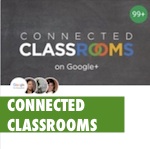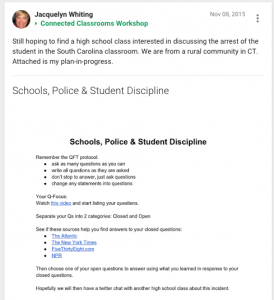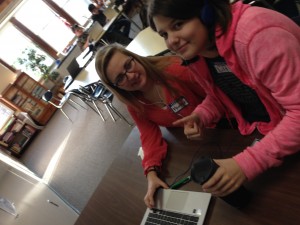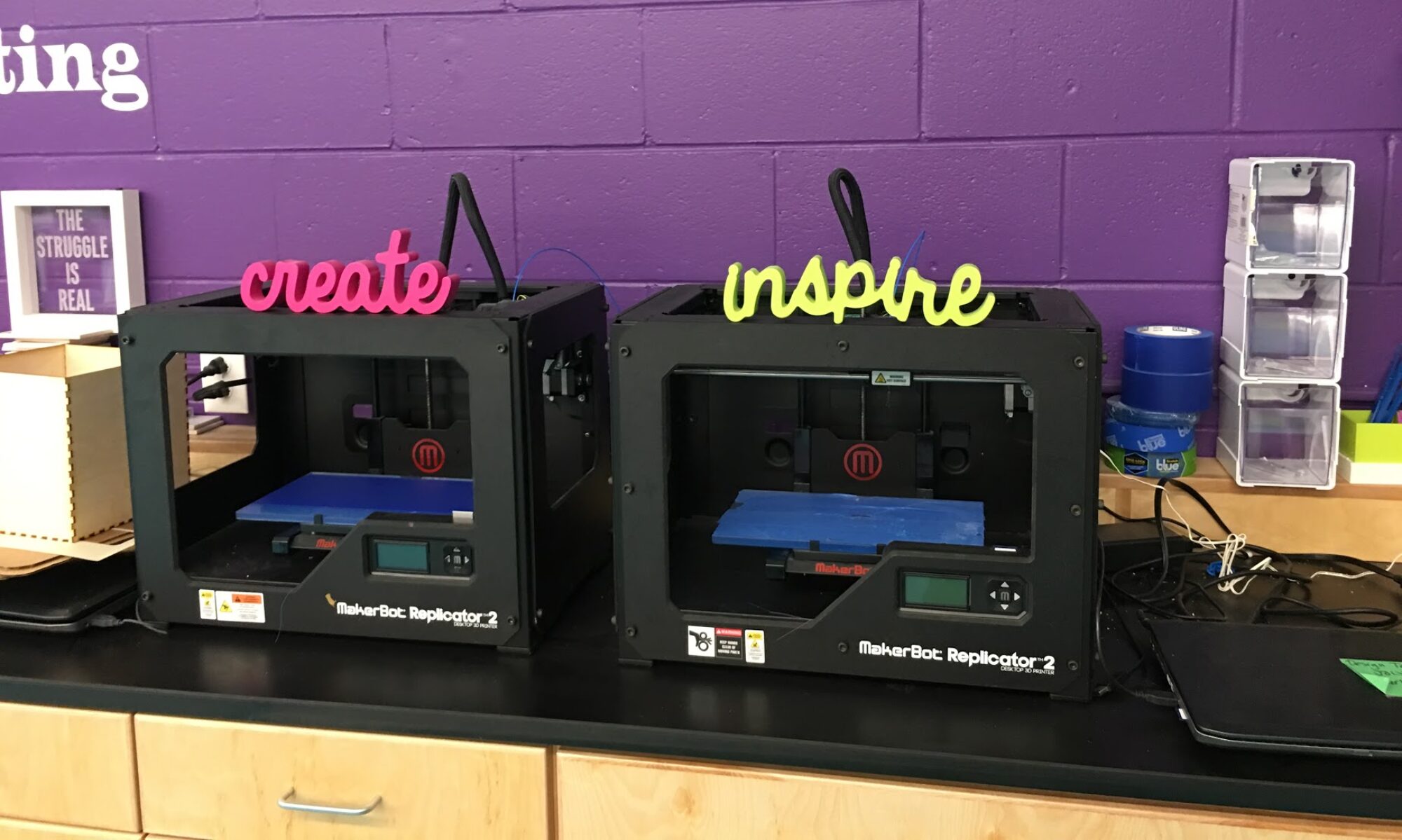Reaching beyond the walls
 I’m always looking for ways for educators and students at different schools to use technology to connect in far-flung locations. One middle-level educator was kind enough to share how he used Google Hangouts, a Google+ Community, back-channeling and plain old email to enable his students to connect with students a couple of states away.
I’m always looking for ways for educators and students at different schools to use technology to connect in far-flung locations. One middle-level educator was kind enough to share how he used Google Hangouts, a Google+ Community, back-channeling and plain old email to enable his students to connect with students a couple of states away.
As a current member of the Connected Classrooms Workshops, a Google + Community, I am always impressed by the notion of busy educators putting themselves out there to make connections for their kids. It’s my assumption these busy folks understand the social nature of learning and want to provide opportunities to connect students to each other even if it means reaching out of their comfort zone to network socially; jumping through red tape hoops; bracing themselves for the inevitable technology glitches; and trusting their kids to engage, be curious, be brave, and somehow learn in this messy, engaging space.
Here is an example of how one social studies teacher, Marc Ducharme of Peoples Academy Middle Level, in Morrisville, Vermont, went about connecting his students.
I’m going to turn it over here to Mr. Ducharme:
An educator’s reflection
“I must admit that I reached out to the Google+ Community quite by accident. Looking to change the current class discussion form of narrative in my US History class, I spent an afternoon doing what many teachers do, which is seeing what other people do and, if it’s good, “borrow” it.
I searched “Google Hangout” + “teachers” and found a post by teacher/educator Jacquelyn Whiting of Joel Barlow High School, in Redding, Connecticut. Her government class was looking for a Google Hangout partner to discuss rights of students in schools. 
In addition to her post, Jacquie included a link to an activity she had created that she hoped would spark a conversation between schools.
I was intrigued and immediately attempted to post a response.
Unfortunately, I was not already a member of the Google+ community (gasp) and was told that my request was being processed! In the digital world, immediate gratification is my expectation so waiting to be processed by some anonymous Hal seemed antique.
I went old school and connected with Jacquelyn via her school email.
Over the next several days Jackie and I communicated through video calls using room.co. Both of us found that there were several hoops to jump through to access Google Hangout in the classroom, the biggest one being our respective school protocol for student safety regarding issues of digital privacy.
Prior to the Hangout, both schools practiced video calls in their respective classrooms.
Adding in a back-channel

My students ironed out issues of wifi, feedback and shared voices in a digital call. The plan was to have 4-5 students in a video conference while the remaining dozen or so students conversed using Todaysmeet.
In reality, Todaysmeet was ineffective.
Having 20+ students in a backstory made for a very difficult time to sustain a conversational thread. The narrative pace on Todaysmeet was fast and furious. Students felt that by the time they had a composed a response, the conversational thread was beyond them. A suggestion from our students for next time was to create 4-5 Todaysmeet conversations and assign students to just one, thereby creating smaller rooms and slower threads.
Logistics: nuts n’ bolts
For the video calls, my school set up four laptops for Google Hangout.
To avoid “feedback” we isolated the video callers in various locations in the school building (stairwell, adjacent classrooms etc) and assigned two students per Chromebook (safety in numbers). 
Our Hangout school had one Chromebook open for conversation, with students operating it. That meant eight students from my school on four computers conversing with two students from their school on one computer.
Each school rotated video callers. As my school had fewer students to rotate in and out we tended to stay for longer durations. Longer durations increased the comfort level on our end; on their end, new students meant starting the conversation over again each time via introductions and prepared discussion questions thrown in.
Despite these minor setbacks, both classrooms enjoyed the chance to talk about the rights of students outside the classroom walls.
Collecting student feedback
Here are some sample student responses from both schools obtained via Google Forms:
The best thing about this experience was:
- Talking with other students (love meeting new people and views)
- Really being able to get into a debate and and talk to other people not just our class mates I think on the hangout we had a really great discussion.
- It was good to get to share our ideas and thoughts with people from the other school. They were really nice so it was easy to talk to them.
- It was good to connect with others that we haven’t met before because we get an outside opinion. Getting to interact and have a meaningful conversation with other people I haven’t talked to before.
If we do this again, it would be better if:
- we had smaller groups in the todaysmeet.
- we both had the same rules with the todaysmeet
- It might be better if we tried using a different application or website to do the video chat. It was a little confusing at times and the connection wasn’t always the best.
- It also would’ve been better if there were the same number of JBHS students in comparison to the number we had out there
In conclusion, I thoroughly enjoyed the experience of meeting a like-minded educator and feel like I made a new friend in the process. Additionally, now that I have tested the waters of Google Hangout and been accepted by Hal into the Hangout Google+ Group, I am very excited about using video chat (and have already done so by conversing with a defense lawyer) in the future.


Using Google tools to connect with other schools by @hennesss #vted https://t.co/TU9cXxSNpn https://t.co/dPpBdJHKD8
RT @innovativeEd: Using Google tools to connect with other schools by @hennesss #vted https://t.co/TU9cXxSNpn https://t.co/dPpBdJHKD8
The Tarrant Institute for Innovative Education: engaging learners through innovative technology.. https://t.co/RcHrBNlJpX #Disrupt
#edtechnewstoday – Using Google tools to connect with other schools – Innovation: Education https://t.co/ilQ0wIlW6b